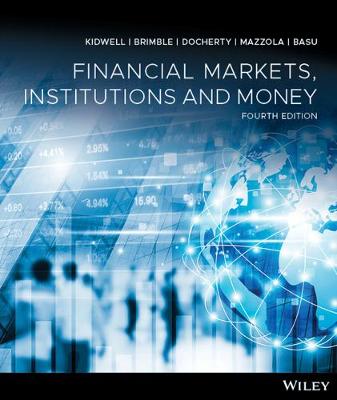The financial system is a key influencer of the health and
efficiency of an economy. The role of the financial system is to
gather money from people and businesses that currently have more
money than they need and transfer it to those that can use it for
either business or consumer expenditures. This flow of funds
through financial markets and institutions in the Australian
economy is huge (in the billions of dollars), affecting business
profits, the rate of inflation, interest rates and the production
of goods and services. In general, the larger the flow of funds and
the more efficient the financial system, the greater the economic
output and welfare in the economy. It is not possible to have a
modern, complex economy such as that in Australia, without an
efficient and sound financial system. The global financial crisis
(GFC) of late 2007?09 (and the ensuing European debt crisis),
where the global financial market was on the brink of collapse with
only significant government intervention stopping a catastrophic
global failure of the market, illustrated the importance of the
financial system. Financial Markets, Institutions and Money 3rd
edition introduces students to the financial system, its
operations, and participants. The text offers a fresh, succinct
analysis of the financial markets and discusses how the many
participants in the financial system interrelate. This includes
coverage of regulators, regulations and the role of the Reserve
Bank of Australia, that ensure the system?s smooth running,
which is essential to a modern economy. The text has been
significantly revised to take into account changes in the financial
world.
- ISBN13 9780730357506
- Publish Date 4 July 2018 (first published 1 January 2011)
- Publish Status Active
- Publish Country AU
- Publisher John Wiley & Sons Australia Ltd
- Imprint Titles Supplied by John Wiley & Sons Australia
- Edition 4th Revised edition
- Format eBook
- Pages 624
- Language English
- URL http://wiley.com/remtitle.cgi?isbn=0730357503
